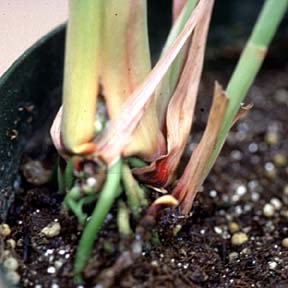Family: Grass, Poaceae.
Habitat: Cultivated fields – especially cereal crops.
Life cycle: Annual.
Growth Habit: 4-8 feet tall; resembles corn, but smaller.
Leaves: 1-2.5 inch wide blades with white midveins.
Flower: July – October. Large panicles of rounded shiny black or red seeds that shatter easily.
Stem: Smooth.
Root: Fibrous root system; often forms brace roots as well.
Similar plants: Shattercane resembles forage sorghum and corn. It is also similar to johnsongrass (Sorghum halepense), but lacks rhizomes and has tighter panicles and wider leaf blades. Shattercane is an annual, while johnsongrass is a perennial.
The problem is…. Aggressive, rapid growth. Competitive with crops
Currently there are 21 weeds on the Ohio Prohibited Noxious Weed List:
- Shattercane (Sorghum bicolor)
- Russian thistle (Salsola Kali var. tenuifolia)
- Johnsongrass (Sorghum halepense L. (Pers.))
- Wild parsnip (Pastinaca sativa)
- Wild carrot (Queen Anne’s lace) (Daucus carota L.)
- Oxeye daisy (Chrysanthermum leucanthemum var. pinnatifidum)
- Wild mustard (Brassica kaber var. pinnatifida)
- Grapevines: when growing in groups of one hundred or more and not pruned, sprayed,cultivated, or otherwise maintained for two consecutive years.
- Canada thistle (Cirsium arvense L. (Scop.))
- Poison hemlock (Conium maculatum)
- Cressleaf groundsel (Senecio glabellus)
- Musk thistle (Carduus nutans)
- Purple loosestrife (Lythrum salicaria)
- Mile-A-Minute Weed (Polygonum perfoliatum)
- Giant Hogweed (Heracleum mantegazzianum)
- Apple of Peru (Nicandra physalodes)
- Marestail (Conyza canadensis)
- Kochia (Bassia scoparia)
- Palmer amaranth (Amaranthus palmeri)
- Kudzu (Pueraria montana var. lobata)
- Japanese knotweed (Polygonum cuspidatum)
Each week, for the next 21 weeks, I will post information and pictures on how to identify these invasive and harmful plants.







